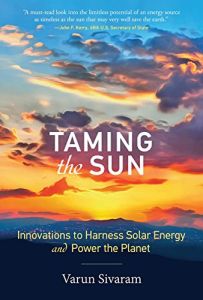Join getAbstract to access the summary!

Join getAbstract to access the summary!
Varun Sivaram
Taming the Sun
Innovations to Harness Solar Energy and Power the Planet
MIT Press, 2018
What's inside?
A clean energy expert offers an overview of the financial, political and tech future of solar energy.
Recommendation
The world is on a deadline to 2050, when renewable sources, predominantly the sun, must generate at least a third of global electricity. Clean energy expert Varun Sivaram reveals a vision of what it will take to shape solar into the necessarily robust global industry the world will require by mid-century. His approach from economic, political, scientific, technological and practical angles can become repetitive, but Sivaram rewards readers with a fresh, comprehensive overview of this surprisingly complex sector. He provides a glimpse of a positive energy future as well as a new understanding of the issues and consequences facing the solar industry.
Summary
About the Author
Varun Sivaram, PhD, is the Chief Technology Officer of ReNew Power Ventures, India’s largest renewable energy firm. He directed the Program on Energy Security and Climate Change at the Council on Foreign Relations. An expert on clean energy technology, climate change and sustainable urbanization, he also wrote Digital Decarbonization.



















Comment on this summary